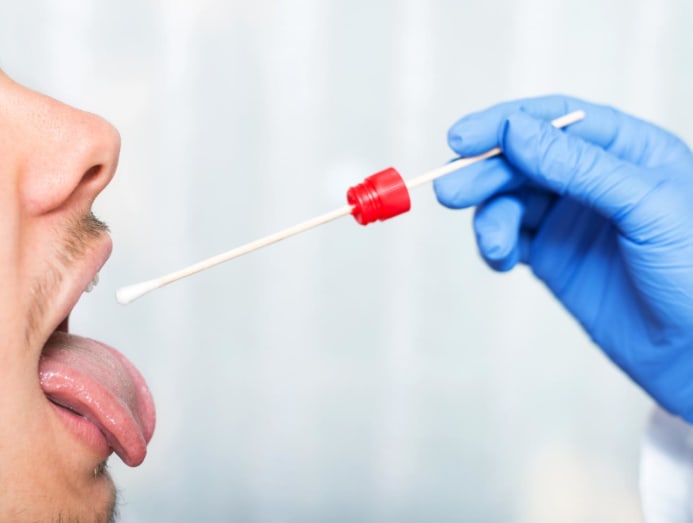Strep is on the rise. Here’s how to minimise your risk
Sore throat is the telltale sign. About one in 10 adults with a sore throat has strep.

(Photo: iStock)
The list of potential culprits for a sore throat just seems to get longer – COVID-19, colds and now allergy season. But a particularly painful case could also point to strep throat. Cases of strep throat have increased and become more severe over the past year, said Dr Sara Siddiqui, a clinical assistant professor and paediatrician at Hassenfeld Children’s Hospital at NYU Langone Medical Center.
According to the Centers for Disease Control and Prevention in the US, rates of a severe form called invasive Group A strep – in which bacteria spread beyond the throat and enter other areas like the bloodstream – have increased over the past year.
It’s easy to confuse strep with other illnesses, and people often delay getting care.
“People say, ‘Oh, I’ll grin and bear it, I’ll grin and bear it,’” said Dr Anna Butrymowicz, an assistant professor of otolaryngology at the University of California, San Francisco. But it’s critical to get a quick, accurate diagnosis so that you can start treating the infection and avoid spreading it.
Here’s how to identify the symptoms of strep throat and how to test for and treat the infection.
WHAT ARE THE SYMPTOMS OF STREP THROAT?

Sore throat is the telltale sign. About one in 10 adults with a sore throat has strep, according to the CDC. Coughing, sneezing, congestion and runny noses are typically indicative of another illness. “The no cough is key,” said Dr Sindhu Aderson, the central region medical director and an attending physician at Northwestern Medicine Immediate Care.
Strep is typically not considered a dangerous infection, but it can still be excruciating. Children often report feeling as if they’re swallowing glass, Siddiqui said. People with strep may suddenly develop a sore throat that hurts when they swallow; they might also feel pain when they yawn. Their tonsils may swell, become bulky, develop a patchy white coating, turn red or produce streaks of pus. Some people with strep can also develop headaches. The lymph nodes at the front of the neck may enlarge and become tender, and people with strep commonly develop fevers. If you have a fever at or above 100.4 Fahrenheit (38 degrees Celsius) and a sore throat so intense that it hurts when you swallow, you should seek out an urgent care or primary care doctor, Butrymowicz said.
Children may have other symptoms: They’re especially prone to rashes, known as scarlet fever. This year in particular, cases of strep in children have looked a little different from usual, Siddiqui said, and experts aren’t sure why. Children have come in with nausea, vomiting and abdominal pain, along with the standard sore throat.
If your child has a sore throat and a fever for more than 24 hours, you should see your paediatrician for testing, Siddiqui said.
Related:
HOW DO YOU TEST AND TREAT STREP?
There is no widely available at-home test for strep throat. Butrymowicz said that some urgent care centres might diagnose you without testing if you are exhibiting four crucial features: Enlarged lymph nodes, a white coating over the tonsils, no cough, and a fever of 100.4 Fahrenheit or higher.

Physicians can perform two diagnostic tests: A rapid throat swab, which can render results in around 10 minutes, and a throat culture swab, which is more accurate but usually takes 24 to 48 hours to yield results.
Doctors treat strep with antibiotics, and some of the medications that they typically recommend, like certain forms of amoxicillin, are in short supply as more people get sick with strep, Siddiqui said. It can take 24 to 48 hours for symptoms to ease after starting an antibiotic, and people usually take it for around 10 days.
“Strep is one of the most straightforward things we see in medicine,” Aderson said.

Despite the commonly held idea that strep throat is a children’s infection, anyone can get it. (Sorry.) The infection is most prevalent among children ages five to 15, but parents, school staff members and anyone who regularly comes into contact with children are particularly at risk. “I see it in all ages,” said Neha Vyas, a family medicine doctor at Cleveland Clinic. A few precautions can help lower your risk:
WATCH WHERE YOU PUT YOUR MOUTH
This is a good rule of thumb in general because viruses and bacteria can linger on surfaces like cups and eating utensils. Avoid sharing anything that touches your mouth, such as food and lip products.
WASH YOUR HANDS
You’ve heard it before: Frequently washing your hands can keep you from getting sick. Strep spreads through respiratory droplets, Vyas said. So, for example, if someone with the infection coughs onto a table and then you graze the table and touch your mouth without washing your hands, you could catch strep.
MASK UP IN CROWDED SETTINGS
Wearing a face mask in a packed environment like the subway or a grocery store can help prevent you from inhaling respiratory droplets, Butrymowicz said.
By Dani Blum © The New York Times Company
The article originally appeared in The New York Times.





